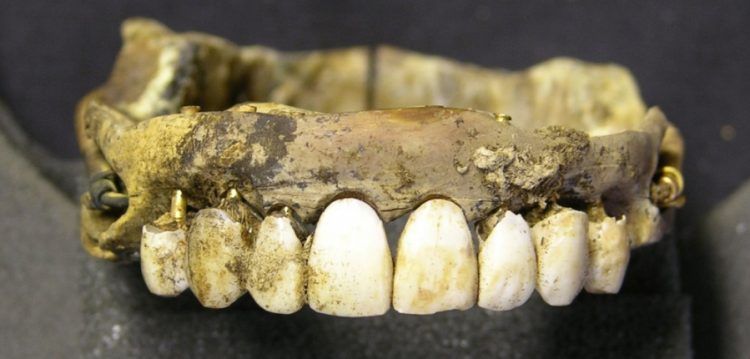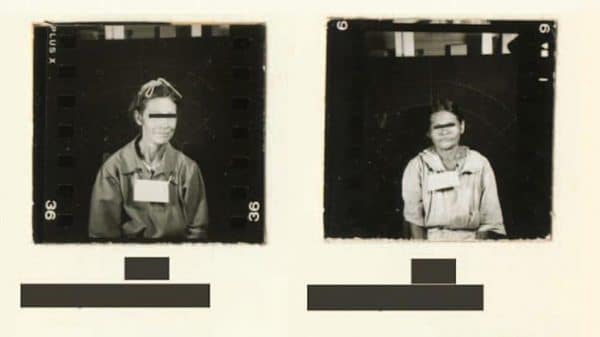We ended part I of our horror dental story hinting at the flourishing business of human teeth between centuries XVIII and XIX. As people were growing more and more attentive towards the health and look of their smile, the request of prosthetics that didn’t look like prosthetics at all (and that didn’t rot in the patient’s mouth) was booming. Real human teeth were simply the best solution for denture makers, yet getting real human teeth might be a bit troublesome.
As you can imagine, there can be two kinds of donors of human teeth: dead ones and living ones. And of course, a tooth pulled from a living donor is best for many reasons, most notably because it reduces the risk of septicemia in the receiving patient.
Nonetheless it wasn’t that easy to find someone who accepted to have his/her teeth pulled without anesthetics, with the unpleasant perspective to spend the rest of his/her life as a disfigured with eating and speaking problems. Only extremely poor and desperate people underwent this painful practice.

Dead donors were much more common. They were easier to find and their teeth were remarkably cheaper. Yet, the teeth of the dead were still so well paid that body snatchers often violated tombs just to pull them from cadavers, instead of stealing the whole corpse to sell it to anatomists.
Medical schools and gallows were also good sources of human teeth for dentists and denture makers. But there were special places where it was possible to find tons of teeth with zero risks for the tooth hunters: battlefields.
War has been a great business from dawn of times, and this counted also for scavengers. Since between the end of the XVIII century and the first years of the nineteenth Europe was smashed by a number of military campaigns, which increased dramatically after the French revolution and the rise of Napoleon, it was a gilded time for body snatchers and tooth hunters.
To make yourself an idea of how many teeth were taken from battlefields, consider that sometimes they were sold by the barrel.

We can basically find two types of tooth hunters in the battlefields. The first is the “proper” tooth hunter, a guy who follows the army and draw teeth from the mouth of the dead, right after the fight or in mass graves dig in the days following the battle*. Some of these hunters were professional, some other were surviving troops or just people living in the battle area who used the occasion to make extra money by robbing the dead soldiers of their belongings: money, boots, clothes, jewels, weapons and, not least, teeth.
The other kind of hunter was the battlefield surgeon. Doctors got in touch with hundreds of dying, dead, or severely injured soldiers: clearly, it was very easy for them to find some tooth to put in their pocket.

Waterloo, the last, fatal battle of Napoleon’s career, was a famous source of human teeth. On June 18th, 1815, more than 150,000 French, Prussian ad British soldiers confronted in an epic fight that caused the death or injury of about 1/3 of them. The battlefield was such a rich resource for scavengers that “Waterloo teeth” invaded the British and American market and the term itself is now quite known. Such an abundance of material was manna from heaven for dentures makers – and also for possible buyers.
Nonetheless, though conscious that the “new” teeth they sported were human, few patients knew where they came from.
And there’s another detail. Of course, once they were taken and sold it was impossible to put one single person’s teeth set back together. Moreover, few molars came from battlefields, as they were thicker to pull. So dentures were always made of teeth coming from different donors, sorted, boiled, chopped and properly shaped.
For our luck, in 1830s London denture maker Claudius Ash grew so sick of working with dead people’s teeth that he perfected a then-newborn technology: porcelain dental prosthetics. But the road to modern false teeth was still long, and tooth robbers handled a prosperous business until the end of XIX century.

Waterloo teeth
*The story of people picking up teeth surfacing from the ground as if they were mushrooms is now believed to be little more than a myth. Now, as a child my mother lived in the nearby of a lawn that covered an old cemetery, and her sisters used to play a game called “dead teeth”, which consisted in a competition to see who collected the most… so maybe the myth has a ring of truth, isn’t it?.














